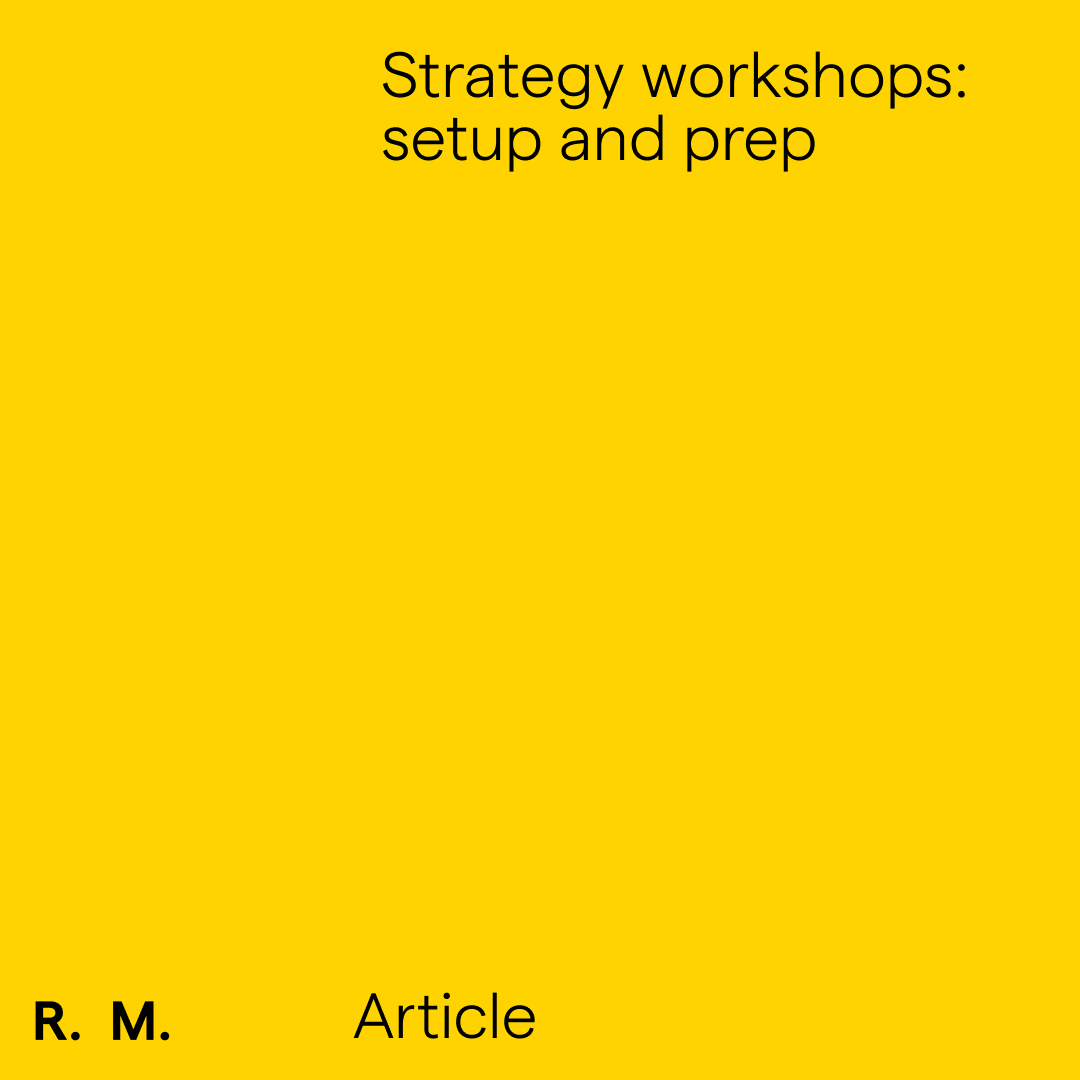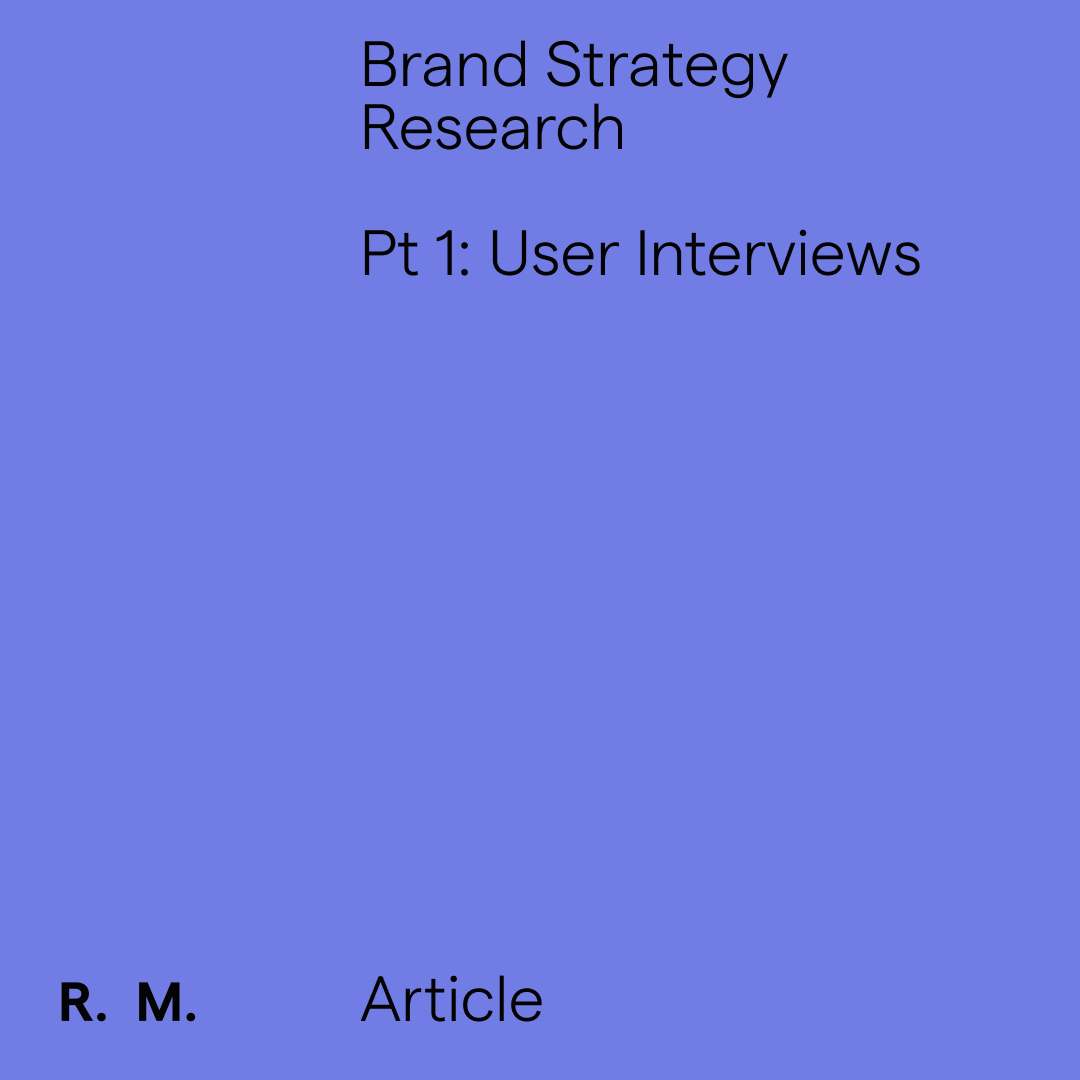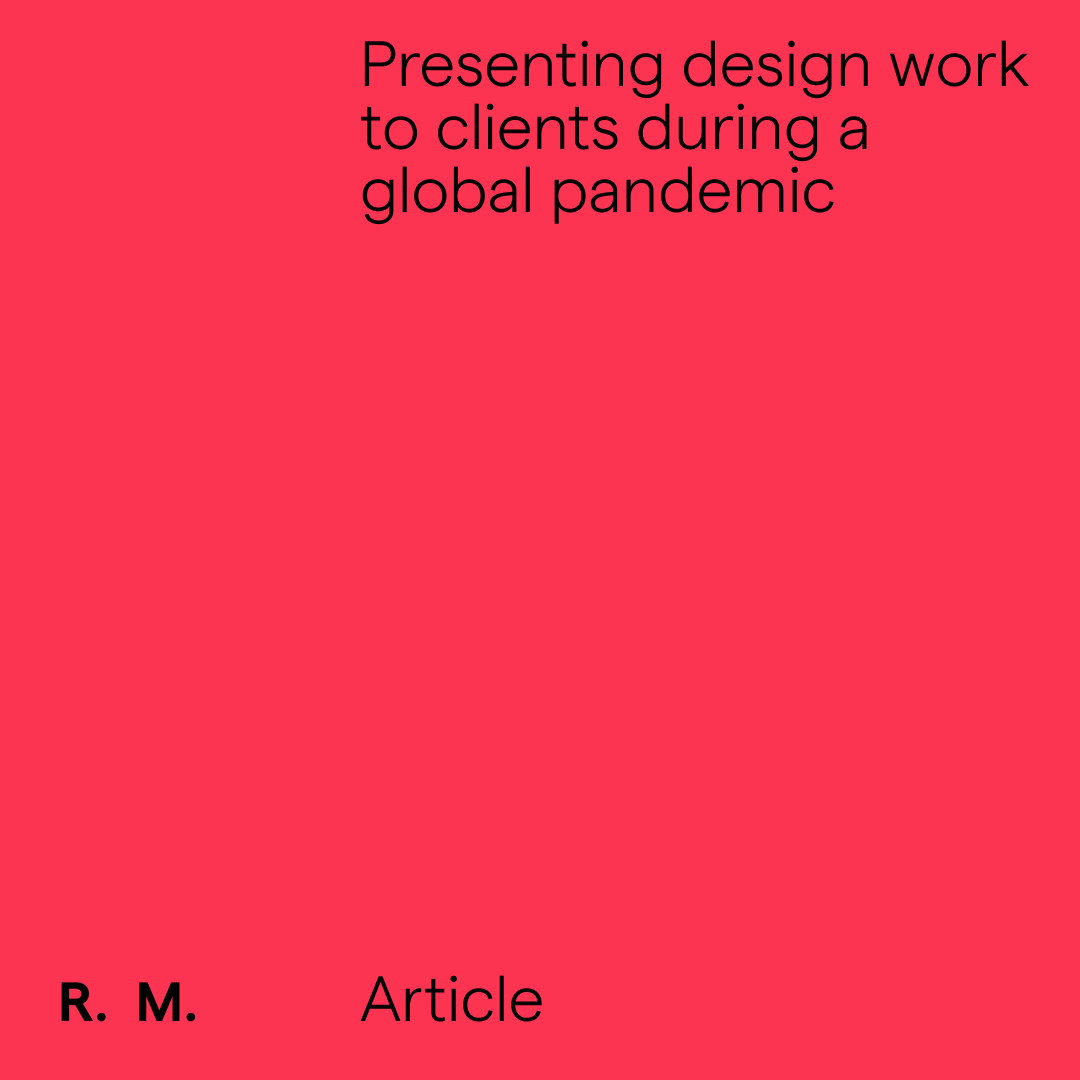Presenting design work to clients during a global pandemic.
Presenting design work to clients during a global pandemic.
Presenting design work to clients during a global pandemic.
Presenting design work to clients during a global pandemic.
By Richie Meldrum
If you were to list the problems caused by coronavirus - you know, death, economic free-fall, the collapse of life as we know it etc - pointing out how it’s made it harder to present design work seems a little nit-picky. However, that doesn’t mean we shouldn’t write a blog post about it!
Given the current climate, with many design businesses predicting substantial drops in revenue over the coming months, the last thing you need is for your design work to flop at the sign off point. Going back to the drawing board takes time and costs money.
No amount of tips and techniques are going to save you if the work isn’t actually worthy of approval, but there are a number of things that you can do to give yourself the best chance of hearing those golden words ‘We love it, what’s next?”
Some of these I picked up from presenting pre-corona days and they still stand true, but I’ve flipped a few of them to address the current situation.
So, here they are, eight things to consider when presenting design work to clients during a global pandemic.
1. One concept
Unless specifically requested otherwise, I’m a firm believer in only presenting one concept.
If I want my garden done, I don’t ask the landscaper for three potential designs. If I want a will drawn up, I don’t want three options. I want one, and I want it to be the best. Same goes for design work. If what you’ve created is based on a strategy - which all design work should be - how can three different design concepts be right for one strategy? There is one good concept, the other two are just sad little versions of that.
2. Present in person
Ok, so this one is obviously a little tricky just now, however, presenting your design work ‘in person’ is extremely important.
In a pre-corona world, this meant inviting the client to your place or going to theirs, however, until we are all allowed to enjoy each others company again, your modus operandi should be to use some form of video call.
Zoom, Google Hangouts etc - it doesn't really matter what you use, the main thing to remember is you should avoid sending a design presentation via email and it being viewed by the client alone.
Being ‘in front’ of the client (via the video call) gives you more control over the environment. You’re able to set the right tone for the presentation, pick up on the dynamics of the ‘room’ and respond to the clients’ reactions on the spot. If you’re not there to answer questions, then gaps can easily appear.
Perhaps the work might be good enough to sell itself, but a bit of backup is always useful and never underestimate the persuasive powers of a good presenter in getting work across the line.
3. Get the main players
I always want the main players to attend the presentation. If you don’t have the person who can sign off on the work, then who is going to sign off on the work? This can get a bit political, so you might need to tread carefully, but push hard to get the highest level of seniority you can. Postpone or reschedule the meeting if you need to.
4. Nail your introduction
Maybe it’s just me, but during a client presentation, I’ve often found transitioning into discussing the work to be a little awkward.
Finding a decent segue to move from the introductions and the chit chat about the weather, how busy you’ve been etc etc into presenting the design work itself can be tricky.
The solution is a well structured introduction.
I’ve always sworn by the ‘past, present, future’ method, which I picked up from a video I saw on YouTube by the awesome Mike Monteiro from Mule Design. Not only does Mike’s method allow for a smooth pivot into the work, it also sets the scene and the expectations, so that everyone in the room is on the same page before getting into it.
Here’s how to structure the ‘past, present, future’ intro.
PAST:
Start by talking about the past, what have you been doing that has led you to this point, based on the kind of project you’ve been working on. For this example, I’ll use a brand project...
“Since we last met, we have been going through the findings from our strategy workshop session and have created a new brand strategy and designed a brand identity concept for your business.”
PRESENT:
Now talk about what you will be looking at in the presentation you are about to deliver...
“Today we will be presenting both the strategy and the identity concept to you, shown via a series of mocked up design applications.”
FUTURE:
Finally, explicitly state what you want from the client after they have seen the presentation...
“What we’re looking for from you today, is a sign-off on both the strategy and the identity so we can progress to the next phase of the project.”
Boom - three easy sentences that set yourself up nicely for the presentation.
5. Detail the research
I’d advise against just jumping into visuals right away. Sure, they might look nice, but design work isn’t supposed to just look nice, it’s supposed to achieve a communication objective. Build up to the work itself by talking about the thinking that’s gone into this - who have you spoken to, what did they tell you, what insights did you draw from it and how does that influence the design outcome. Validate your direction by showing the strategy that sits behind what you have created. The deeper the better, as long as it’s interesting and relevant.
6. Present don’t just show
This is probably the biggest area of change since coronavirus, for me anyway. Remote presentation of design work isn’t new by any means - for some people, it’s the only way they do it - but it is something a large number of designer businesses and their clients are still getting used to.
Here’s a few things to consider.
Break down the barriers of distance and tech as much as you can. Get everyone to turn their cameras on. Select the grid view so you can see everyone's faces (keep an eye out for reactions as you present). Try and get everyone talking, even if it’s just to say hello, it will bring everyone together just that little bit more.
Work out how you are going to structure questions and comments. Can anyone just jump in when they have the urge, or are you going to tackle that at the end? Whatever you decide, let the audience you are presenting to know the score before you start.
Remember, while you might have spent the last few weeks pouring over every inch of the design work, the client hasn’t. Think about the best way for someone to absorb what you have created when they are looking at it for the first time. Don’t just smash-click through a slide deck of different images like your swiping through Tinder pics. Take your time, select a few things to talk about on each slide and keep a nice steady but controlled pace.
Think carefully about the order of the work, map out different sections and break them up with divider slides. Consider how you can best show the decisions you made by interjecting the work with insights, or customer quotes or key considerations. It helps create a stronger narrative around what you are showing.
If you’ve been presenting a range of different design work - such as an identity concept, or a marketing campaign concept, compile a ‘highlights slide’ to finish with. This should feature a selection of different pieces of design work taken from throughout all sections of the presentation. It’s a good way to show the work as a whole and helps to have something up there on screen for any discussion that needs to happen afterwards, instead of just starting at whatever was last in your deck.
Finally, and again, this might just be me, but I feel remote presenting just isn’t that conducive to in depth analysis, feedback and discussion of finer details right there and then. There’s too much flicking back and forth between different pieces of work and it breaks up the flow. So, don’t dwell on it too much. If the client needs more time to go through it, send them a link to the work immediately and arrange a time to meet up again once they’ve had time to go to the bits they wanted to take a closer look at.
7. All about the audience
One of things I get asked the most about presenting design work is what to do when a client simply says ‘I don't like it.’ When most people hear this, their natural response is to delve deeper to try and understand the feedback by asking ‘What don’t you like about it?’ This pushes the conversation into a subjective critique of this, that and the other thing. The outcome of which is typically that you go away and try to fix the things they don’t like.
I find a better response is to ask them a different question, ‘Do you think it will work for your audience?’ Ultimately, personal taste shouldn’t come into it. We’re not trying to make one person like the work, we’re trying to solve a communication objective based around our target markets. Use your strategy, point to the audience and show the line between what they want and what you have created. It’s not full proof and ultimately, you need to listen to whoever is paying for the work, but stick to your guns and fight for what you believe is right until a change of tact is needed.
8. Take the approval.
Another one I got from Mike. When you’ve finished presenting the work, the minute you hear ‘we love it, approved, where to from here?’ (or words to that effect) that is your signal to start wrapping up the meeting! I’m not talking about pulling a mic drop and smashing that ‘exit meeting’ button right away. But once you’ve got what you wanted - the sign off of the work - there’s no need to hang around and run the risk of someone changing their mind, or finding an objection they overlooked. Wrap it up by telling them what the next steps are, don’t forget to thank everyone for their time and be on your merry way.
So, that’s it, 8 things to think about when presenting design work in the midst of a global pandemic. Let me know if there’s any you do, that I’m missing.
Cheers
Richie
A successful workshop can do wonders for your strategy project. Whether you’re working in brand, digital, business or something else, the strategy workshop forms a critical part of your research.
It’s a rare opportunity to get the people closest to the project in a room and dedicate time to tackling a wide range of questions, issues, ideas and more. The answers and insights you uncover often play a huge part in where you go next and the final outcomes you achieve.
Here’s 10 pointers I alway follow when preparing / setting up a strategy workshop.
1. Pick the right space
You’re going to be asking some hard qs in this strat session, so you need a space conducive to creative and critical thinking. Don’t do it huddled round someone's desk, or in a cupboard or something. Pick a nice, light, comfy well-ventilated space with enough room to move about a bit.
2. Do it in the morning.
Much better to do it in the morning rather than the afternoon. You need everyone to have maximum brain capacity and will power to be there. Both of these dwindle as the day goes on, esp after lunch when they are still digesting a footlong sub and thinking about what they’ll watch on Netflix that night.
3. Four hours max
I always keep each session to four hours. After that, people start getting tired, losing interest and switching off. If you need longer, run more sessions.
4. Eight people max
Any more and one of two things tends to happen. Either there are too many people and too many voices vying to be heard or you get what’s called the ‘bystander effect’ where people feel there are enough bodies in the room that they can sit back, not get involved and let the others do the talking. If you need more people, run more sessions.
5. Regular Breaks
These sessions are hard work. Reward your attendees with regular breaks for bathroom visits, refreshments, leg stretching and tech checking. It keeps people focused and energy levels up when you reconveen. I do them every 25 mins or so.
6. Catering
Always a good idea to keep energy and brain levels up by keeping attendees well fed and watered. Make sure there is a selection of drinks, snacks and treats for people. Coffee is a must for some folk so take an order early on. Then go for fruits, nuts, sweets, pastries - whatever you like.
7. Intro Presentation
You might get a person attending your workshop that accepted the invitation without really looking into what the event was. So, before we start, for their benefit, and to get everyone on the same page, I always like to give a little intro into what it is we will be doing, and why we’re doing it. Gets everyone nodding before you get into it.
8. Ground Rules
This was something I learned during my time at August where we’d go through a list of ground rules before every client workshop session. Some of them were designed to encourage contribution, or to maintain momentum, but the one I like the most was ‘No Tech’. Research shows that having someone on their phone in a group session, not only makes them less attentive, but it also drops the attention levels of the entire room. At the start of the session, just request that all mobiles, laptops etc are put away and, if anyone needs to take a call, they are welcome to excuse themselves.
9. Take photos.
Finally, another one I learned at August. There’s so much that gets said during a workshop session, often recalling it all is hard. Photos of the session showing the people, the activities, the food, the setting etc - can be dropped into playback docs alongside written content, to act as a visual trigger. Being able to see the photos helps people recall the event with more ease and therefore what happened - pretty useful if you are trying to get alignment and agreement about what went on.
10. Next Steps
At the end of the sesison, thank everyone for coming and tell them what will happen next:
Eg "We will now be adding the output of this session to the other research we have been doing in order to create the strategy framework which we will be presenting back to the team on 22nd July."
It means people leave the session knowing what they have contributed and what it means for the project.
So, that’s it, 10 things I do whenever I run a strategy workshop that make it go that little bit better. Let me know if there’s any you do, that I’m missing.
Cheers
Richie
Sign up for blog posts, news, workshop freebies
and other little titbits. No spam guarantee.
Sign up for blog posts, news, workshop freebies and other little titbits. No spam guarantee.
Sign up for blog posts, news, workshop freebies and other little titbits. No spam guarantee.
Sign up for blog posts, news, workshop freebies and other little titbits. No spam guarantee.
Sign up for blog posts, news, workshop freebies and other little titbits.
No spam guarantee.
mail@richiemeldrum.com
+61-431-810-751
mail@richiemeldrum.com
+61-431-810-751
mail@richiemeldrum.com
+61-431-810-751
mail@richiemeldrum.com
+61-431-810-751
mail@richiemeldrum.com
+61-431-810-751
© 2025 Richie Meldrum.
All rights reserved.
© 2025 Richie Meldrum.
All rights reserved.
© 2025 Richie Meldrum.
All rights reserved.
© 2025 Richie Meldrum.
All rights reserved.
© 2025 Richie Meldrum.
All rights reserved.
Website by
Website by
Website by
Website by
Website by



